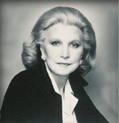|
Edward Durell Stone
born March 9, 1902, Fayetteville, Ark., U.S.
died Aug. 6, 1978, New York City
American architect who directed the design
of a number of significant modern buildings.
Stone studied art at the University of
Arkansas, Fayetteville, in 1920–23 and architecture at Harvard
University and the Massachusetts Institute of Technology. In
1927 he won a two-year scholarship that enabled him to study
and travel in Europe, and during that period he was exposed to
the modern movement in architecture there. In 1930 Stone joined
the New York firm responsible for the design of Radio City Music
Hall. He organized his own architectural firm in 1936. He participated
in the design of the Museum of Modern Art (1937), the first building
in New York City in the International Style. After World War
II, in which he served as chief of planning and design for the
U.S. Army Air Corps, he became an associate professor of architecture
at Yale University (1946–52).
Among Stone's best-known buildings outside
the United States are El Panama Hotel, Panama City, Panama (1946),
notable for its pioneering use of cantilevered balconies in the
construction of a resort hotel; the U.S. Embassy in New Delhi
(1954); and the Nuclear Research Center, near Islamabad, Pak.
(1966). The embassy in New Delhi, with its lacy grilles and an
inner water garden, fountains, and islands of plantings, was
well received and led to many foreign commissions. His design
for the American Pavilion for the Brussels World's Fair of 1958,
a circular structure 340 feet (104 m) in diameter with a free-span
translucent roof, also attracted attention.
Examples of Stone's work in the United
States include the Fine Arts Center, University of Arkansas (1948);
the Gallery of Modern Art, formerly housing the Huntington Hartford
collection (1959; now the New York Cultural Center) in New York
City; the National Geographic Society headquarters (design completion
1961) in Washington, D.C.; and the John F. Kennedy Center for
the Performing Arts (1971), also in Washington, D.C. His skyscrapers
include the 50-story General Motors Tower in New York City (design
completion 1964) and the 80-story Standard Oil (Indiana) Tower
in Chicago (1974; now the Amoco Building).
Stone's autobiography, The Evolution of
an Architect, was published in 1962.
Source: "Edward Durell
Stone." Encyclopædia Britannica. 2004. Encyclopædia
Britannica Premium Service. 1 Sept. 2004 <http://www.britannica.com/eb/article?eu=71610>
|
Ellen McCluskey Associates was founded
by Ellen Lehman McCluskey in
1948 in New York. As an heir of the Lehman family, of Lehman
Brothers fame, Mrs. McCluskey was granted access to many of the
country's Fortune 500 business and social leaders. The company
became one of the leading interior design firms in the country
and over the years Ellen McCluskey Associates became internationally
known for its hotel interiors, corporate and commercial installations,
and high-end residential clients.
Source: http://www.mccluskeydesigngroup.com/historyframe2.html
|

|
Mrs.George Tuckerman Draper, otherwise
known as, Dorothy Draper became
one of the most successful interior decorators of the 1930's
and 40's. She is credited as a significant historical figure
in the development of the interior design profession and redefined
the role of the decorator from 1925 to 1960. She increased the
exposure of women in the interior decorating world and of interior
decorators, by aggressively pursuing large-scale public commissions,
which was an area that was previously exclusive to architects.
Source: http://www.frederickcooper.com/news02.html
Royal Barry Wills won many awards
in national design contests and had attention-winning articles
published in large popular magazines. Professional journals ran
many illustrated pieces about him and his work. It has been said
that he "wanted only to design the New England house supremely
well and succeeded beyond any other architect."
He grew up in Melrose, Massachusetts, studied
four years in the class of 1918 of Massachusetts Institute of
Technology, served in the Navy and then worked for William Cramp
& Sons shipyard until he joined the Turner Construction Company
in the design department. A Boston newspaper published a series
of his articles and sketches. This brought him clients who liked
his plans and elevations.
He won many prizes and awards in competitions
for small houses. At the White House, in 1932, the President
presented him with a Gold Medal for outstanding work in domestic
architecture. Life Magazine chose him as one of eight
architects to design the houses presented to millions of its
readers.
"It could almost be called
a cult - so great remains the affection in the housing industry
for Royal Barry Wills. Few, if any, architects ever commanded
such a following - years after his death. His name is still alive,
practically the symbol of the ultimate objective in the hopes
of countless couples planning or buying a house. This tribute.
. . belongs in no small measure to his associates, . . . who
are adding their individual design talents to the task of improving
our environment."
-William E. Dorman, Real Estate
Editor, Boston Herald Traveler
Source: dustjacket, Houses
for Good Living by Royal Barry Wills Associates, Architectural
Book Publishing Company, Stamford, CT., 1993.
|